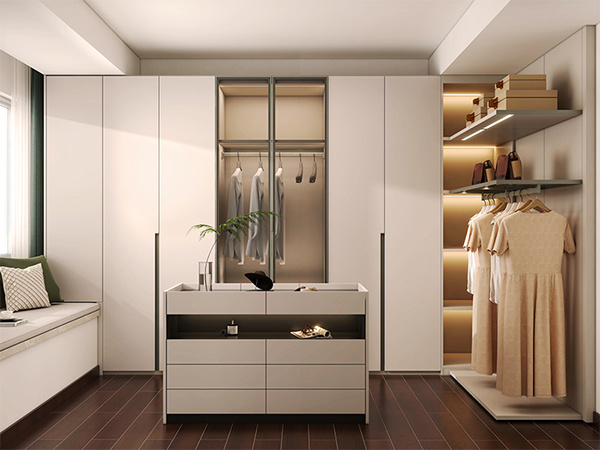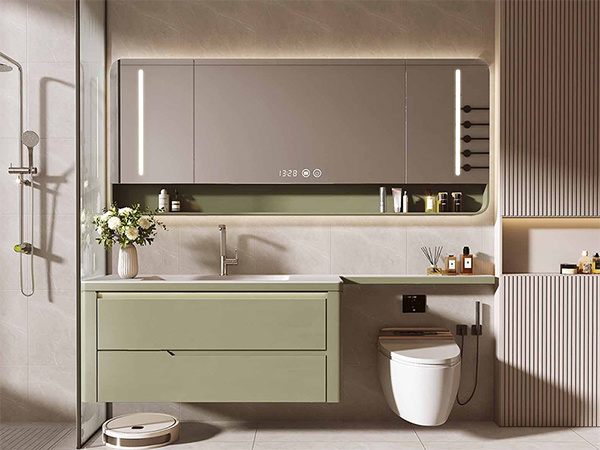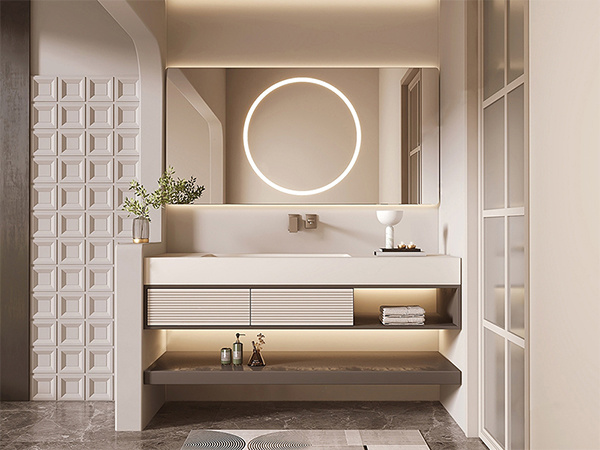Eco-friendly materials and multi-functional design, cloakroom cabinet opens a new chapter of green home
Jul 03,2025
Summary:
Wardrobes made from eco-friendly materials and featuring multi-functional designs are leading the way in sustainable home decor.

In an era where environmental consciousness shapes consumer choices, wardrobes are undergoing a green revolution. Beyond basic storage, they now embody sustainability through material innovation and functional design, proving that eco-friendly living and practicality can go hand in hand.
The most significant shift lies in the use of sustainable materials. Traditional wardrobes often relied on plywood with formaldehyde-based adhesives, but modern alternatives prioritize health and environmental safety. FSC-certified solid wood, sourced from responsibly managed forests, ensures minimal deforestation, while bamboo—a fast-growing, renewable resource—offers durability and a sleek aesthetic.Recycled materials are also gaining traction. Wardrobes made from reclaimed wood or recycled plastic bottles reduce waste and carbon footprint; some manufacturers even incorporate agricultural by-products like wheat straw into composite panels, adding a unique texture while repurposing waste.Low-VOC (volatile organic compound) paints and finishes are standard, eliminating harmful emissions that affect indoor air quality. This is particularly crucial for bedrooms, where wardrobes are often placed, as it reduces health risks for families, especially children and individuals with allergies.
Modern wardrobes are designed to do more with less, reducing the need for additional furniture and saving space. Convertible models, for example, feature fold-down desks or ironing boards that transform the wardrobe into a mini dressing station—ideal for small bedrooms or home offices.Modular systems allow users to add or remove components as needs change. A basic wardrobe can expand with extra shelves for seasonal items, or integrate a laundry hamper compartment to streamline clothes sorting. Some designs even include hidden compartments for valuables, eliminating the need for a separate safe.For shared living spaces, wardrobes with dual-sided access or partitioned sections provide individual storage for multiple users, reducing conflicts over space. This versatility makes them suitable for apartments, dormitories, and multi-generational homes alike.
Sustainability in wardrobes extends beyond materials to energy usage and lifespan. LED lighting, which consumes up to 75% less energy than traditional bulbs, is now a standard feature in many models, with motion sensors ensuring lights only activate when needed.Durable construction methods, such as reinforced joints and scratch-resistant surfaces, extend wardrobe lifespans to 15–20 years—far longer than fast-fashion furniture. This reduces waste from frequent replacements and aligns with the circular economy principle of “buy less, buy better.”
Some manufacturers also offer repair services or replacement parts, making it easier to fix minor issues instead of discarding the entire wardrobe. This focus on longevity not only benefits the environment but also saves consumers money over time.
The rise of eco-friendly, multi-functional wardrobes reflects a broader shift toward sustainable home design. Consumers are increasingly prioritizing products that align with their environmental values, prompting the industry to innovate in materials and manufacturing.Designers are collaborating with environmental scientists to develop even more sustainable solutions, such as biodegradable finishes and carbon-neutral production processes. Retailers are also highlighting eco-credentials, helping consumers make informed choices by labeling materials and emissions data.As these wardrobes become more accessible, they are proving that green living doesn’t require sacrificing style or convenience. Instead, they offer a practical way for households to reduce their ecological footprint while enjoying a more organized, efficient living space.
Latest News
Smart technology and space optimisation reinvent the bathroom vanity experience
Bathroom vanities are being transformed by smart technology and space-saving designs.
Eco-friendly materials and water-saving design lead to a new trend of bathroom vanity.
From recycled wood countertops to smart faucets, these designs reduce environmental impact while enhancing functionality and aesthetics, reflecting a growing consumer demand for sustainable home fixtures.




